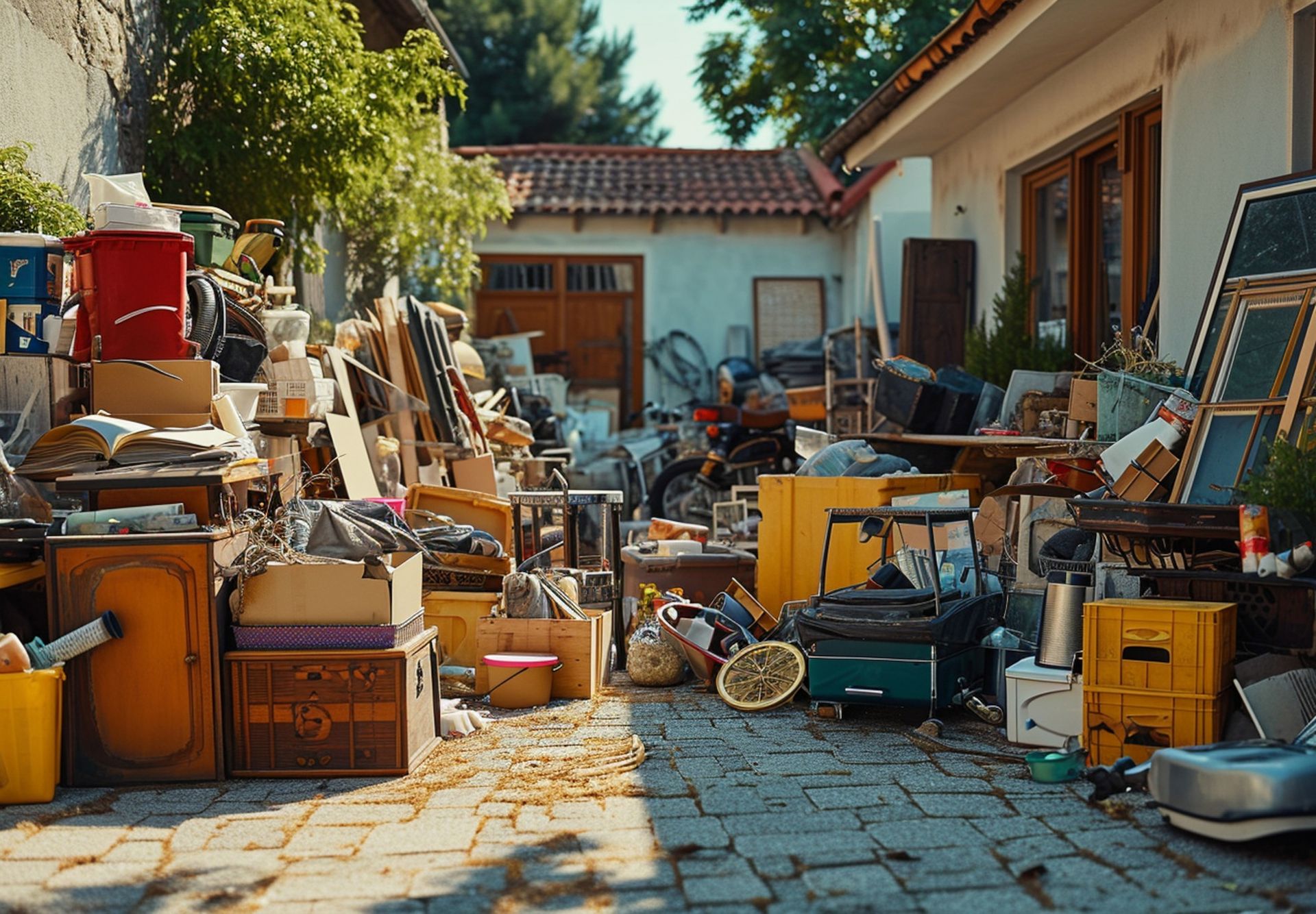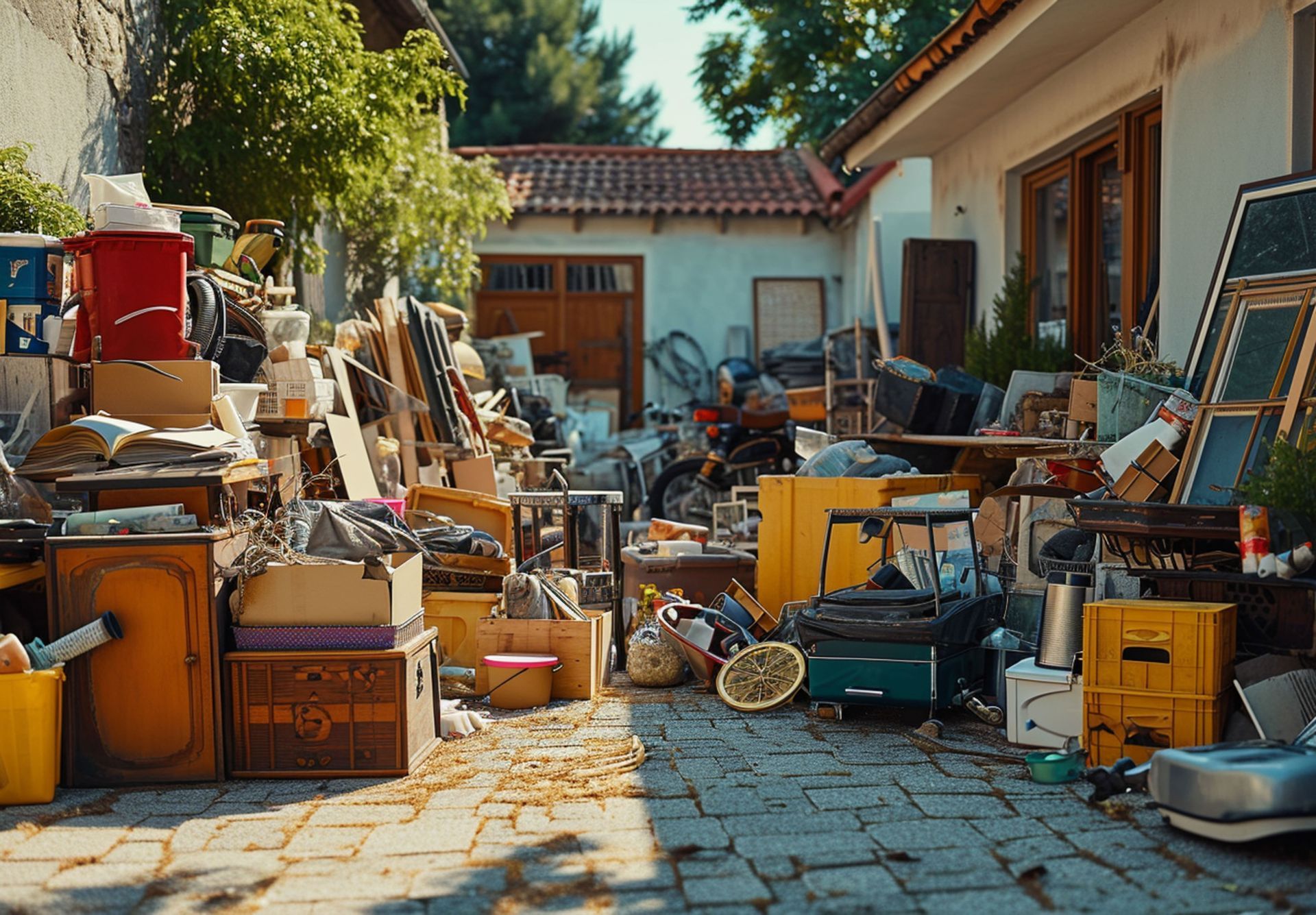How to Sell Old Appliances: A Step-by-Step Guide
November 4, 2024
How to Sell Old Appliances: A Step-by-Step Guide
Selling old appliances is a practical way to declutter your home and earn extra cash. Many individuals and families have outdated or unused appliances taking up space. By learning how to sell old appliances effectively, you can turn these items into money.
In today's society, selling used appliances is important. With a focus on sustainability, finding new homes for functional appliances reduces waste and promotes recycling. Whether you want to sell a junk washer and dryer for cash or need to know where to sell used washer and dryer units, there are many options available.
Key Takeaway:
This step-by-step guide will help you sell your old appliances successfully, make some extra cash, and declutter your space.
Step 1: Preparation for Selling Old Appliances
Cleaning Your Appliances
Ensuring your old appliances are spotless can significantly increase their appeal to potential buyers. A thorough cleaning is the first step in this process.
Steps to Clean Different Types of Appliances Effectively
- Refrigerators and Freezers: Empty the contents and defrost if necessary. Use a mixture of vinegar and water to wipe down all surfaces, paying particular attention to any stains or spills.
- Ovens and Microwaves: Remove any food debris. For stubborn stains, apply a paste of baking soda and water, let it sit for a few hours, then scrub with a microfiber cloth.
- Washing Machines and Dryers: Run an empty cycle with hot water and white vinegar to eliminate any odors. Clean the lint trap in dryers thoroughly.
- Small Appliances (e.g., Coffee Makers, Blenders): Disassemble removable parts and clean them separately using warm soapy water. Wipe down the exterior with a damp cloth.
Presenting a well-maintained product is crucial.
Importance of Presenting a Well-Maintained Product
A clean appliance not only looks more attractive but also reassures buyers of its good condition. Buyers are more likely to trust that a well-maintained product will function properly. This perception can lead to quicker sales and potentially higher offers.
- Checking Functionality: Before listing your appliances for sale, it's essential to ensure they are in good working order.
- Testing Major Functions
- Refrigerators: Verify that the cooling system works efficiently by checking both the fridge and freezer compartments.
- Washing Machines: Run a full cycle to confirm the machine spins correctly without unusual noises or leaks.
- Microwaves: Test by heating water; ensure it heats evenly without any sparks or malfunctions.
- Dishwashers: Complete a wash cycle using dishes to confirm its cleaning efficiency.
Identifying issues early allows you to address them or adjust your pricing accordingly.
Taking High-Quality Photos
High-quality photos play a pivotal role in attracting potential buyers online.
Techniques for Taking Appealing Photographs
- Lighting: Utilize natural light where possible. Avoid harsh shadows by taking photos during daylight hours.
- Angles: Capture multiple angles including close-ups of key features or any imperfections.
- Backgrounds: Choose clutter-free backgrounds to keep focus on the appliance itself.
Good lighting and thoughtful background choices enhance visual appeal, making your listing stand out among others.
Preparing your old appliances for sale involves thorough cleaning, ensuring functionality, and presenting them attractively through high-quality photos. These steps set the stage for successful transactions by building buyer confidence from the outset.
Checking Functionality
Before listing your old appliances for sale, it's essential to ensure they are in good working condition. Thorough appliance maintenance not only boosts your chances of a successful sale but also builds trust with potential buyers.
Steps to Test Major Functions:
- Refrigerator: Verify that it cools properly by setting the thermostat to a moderate temperature and checking if the interior reaches and maintains that level.
- Washing Machine: Run a complete cycle to ensure it fills, agitates, drains, and spins correctly. Listen for any unusual noises that could indicate mechanical issues.
- Microwave: Heat a cup of water for a couple of minutes to confirm it functions efficiently without any sparks or strange sounds.
- Oven/Stove: Turn on each burner and bake something simple, like cookies, to make sure the heating elements work evenly.
- Dishwasher: Load it with dishes and run a full cycle to check if it cleans effectively and drains water properly.
Testing these crucial features assures buyers they’re getting a reliable product. If you discover any minor issues during your tests, consider fixing them yourself or hiring a professional. This investment can significantly increase your appliance's resale value.
Importance of Preparation:
Combining thorough cleaning with this step ensures you present well-maintained items ready for use. High-quality photos further emphasize their good condition and working order, attracting more interested buyers.
Proper preparation maximizes the sale value of your old appliances. By cleaning, testing functionality, and taking attractive photos, you set the stage for successful transactions.
Taking High-Quality Photos
Capturing high-quality photos is essential for attracting potential buyers. Use these appliance photography tips to ensure your items stand out:
- Natural Light: Utilize natural light by taking photos near windows during the day. Avoid harsh lighting or shadows that can detract from the appliance's appearance.
- Clutter-Free Background: Choose a simple, clutter-free background to keep the focus on the appliance. A plain wall or clean floor works well.
- Multiple Angles: Photograph the appliance from various angles to showcase all its features. Include close-ups of any unique aspects or brand logos.
- Highlight Condition: Ensure your photos accurately reflect the condition of the appliance. If there are minor scratches or wear, capture these details honestly.
Good lighting and a neat background play a significant role in making your listing more appealing and professional. This step involves thorough cleaning, checking functionality, and taking attractive photos of your items to maximize their sale value.
Step 2: Understanding the Resale Value
Factors Influencing Price
When pricing used appliances, various factors come into play. Identifying and understanding these elements can help you set a competitive price that attracts buyers.
1. Age of Appliance
The age of an appliance is a critical determinant in its resale value. Newer models generally command higher prices due to their advanced features and longer remaining lifespan. For example, a two-year-old washing machine will likely fetch more than one that's been in use for ten years.
2. Brand Value
Brand reputation significantly affects pricing. Appliances from well-known brands such as Whirlpool, Samsung, or LG often have higher resale values because they are associated with quality and reliability. Buyers are usually willing to pay a premium for trusted brands.
3. Condition Assessment
An appliance's condition is another essential factor. Even if an appliance is older, it can still attract buyers if it's well-maintained and fully functional. Conduct a thorough condition assessment:
- Exterior: Look for scratches, dents, or discoloration.
- Interior: Check for any signs of wear and tear.
- Functionality: Ensure all features work as intended.
A pristine appliance will always have better market appeal.
4. Model and Features
Certain models and features may be more desirable than others. High-efficiency appliances or those with smart technology tend to be more attractive to buyers looking for modern conveniences. For instance, a refrigerator with a built-in water dispenser will typically sell at a higher price point than a basic model.
5. Demand and Supply
Market demand also plays a role in pricing used appliances. If the market is saturated with similar items, you might need to lower your price to compete effectively. Conversely, if your appliance is rare or highly sought after, you can set a higher price.
6. Warranty and Documentation
Having original receipts, warranty information, and user manuals can add value to your appliance. They provide buyers with confidence regarding their purchase's legitimacy and future support options.
By considering these factors when setting your price, you can ensure you're offering a competitive rate that reflects the true value of your old appliances. This strategy not only maximizes your potential earnings but also enhances buyer satisfaction by providing them with quality products at fair prices.
Researching Market Prices
Understanding the resale value of your old appliances is crucial for setting a competitive price. This step involves considering various factors that affect the price and researching similar items in the market.
Utilizing Online Resources
To accurately assess the market value of your appliance, leverage online platforms like eBay and Craigslist. These sites offer a wealth of information on pricing used appliances.
- eBay: Search for completed listings to see what similar appliances have sold for recently. Use specific keywords such as "used refrigerator" or "second-hand washer" to find relevant results.
- Craigslist: Browse local listings to understand what sellers in your area are asking for similar items. This can help you gauge regional price variations.
Competitive Pricing Analysis
When searching, consider these factors:
- Age of Appliance: Older models typically fetch lower prices unless they are vintage or rare.
- Brand Value: Popular brands often attract higher offers due to perceived reliability and quality.
- Condition Assessment: Appliances in excellent condition with minimal wear and tear will command better prices.
These platforms also allow you to filter by location, condition, and other specifics, making online price comparison straightforward. By conducting thorough market research for appliances, you can set a fair and attractive price, increasing your chances of a successful sale.
Step 3: Choosing Your Selling Platforms
Online Marketplaces
When it comes to selling your old appliances, online marketplaces can offer a vast audience and potentially higher selling prices. However, it's crucial to weigh the pros and cons before choosing this route.
Pros:
- Wider Reach: Platforms like eBay, Craigslist, Facebook Marketplace, and OfferUp attract millions of users. This broad audience increases your chances of finding the right buyer.
- Convenience: Listing an item online is straightforward. You can upload photos, write descriptions, and set prices from the comfort of your home.
- Competitive Pricing: The ability to compare similar listings helps you set a competitive price. Buyers can also bid on items in auction-style listings on eBay, sometimes driving the price higher.
- Variety of Payment Options: Most platforms support multiple payment methods, making transactions seamless for both parties.
Cons:
- Higher Competition: Due to the vast number of listings, your appliance might get lost in the crowd. Standing out requires high-quality photos and detailed descriptions.
- Fees and Commissions: Many platforms charge listing fees or take a percentage of the sale price. For example, eBay charges a final value fee that can eat into your profits.
- Shipping Hassles: If you're selling large appliances, shipping can be costly and logistically challenging. Local pickup options can mitigate this but may limit your buyer pool.
- Scams and Fraud Risks: Online transactions carry some risk. Make sure to use secure payment methods and verify buyer credentials when possible.
Local Options
Local selling options offer a different set of advantages and drawbacks compared to online marketplaces for appliances.
Pros:
- Quick Transactions: Selling to local dealers or through garage sales often results in faster cash offers. Buyers are typically looking for immediate deals.
- No Shipping Required: Unlike online sales, local transactions usually involve face-to-face exchanges, eliminating shipping concerns.
- Community Engagement: Selling within your community can foster trust. People prefer buying from someone nearby whom they can easily contact if issues arise.
Cons:
- Potentially Lower Prices: Local dealers might offer lower prices than what you could get online because they're looking to resell at a profit.
- Limited Audience: The reach is confined to your geographical area, reducing the number of potential buyers.
- Time Investment: Organizing garage sales or negotiating with local dealers can be time-consuming.
Choosing between online marketplaces and local options depends on your priorities—whether it's maximizing profit or completing a quick sale. Each platform has unique benefits and challenges that cater differently based on your needs.
Local Options
Considering local options to sell your old appliances can offer several advantages:
- Convenience: Approaching local dealers and stores means you can avoid the hassle of shipping large items. Simply drop off your appliance and receive a cash offer on the spot.
- Quick Cash Offers: Local dealers often provide immediate cash offers, which is beneficial if you need quick funds or want to avoid waiting for an online buyer.
- Avoiding Competition: Selling locally reduces competition compared to online marketplaces where numerous listings might overshadow your item.
However, there are some potential downsides:
- Lower Prices: Local dealers might offer lower prices than what you could potentially get from an online sale. They need to resell the appliance at a profit, so their initial offer may be conservative.
- Limited Reach: Unlike online platforms that connect you with a broad audience, local selling options limit your potential buyers to those in your immediate vicinity.
To find local dealers or stores, search for "used appliance stores near me" or visit popular resale shops in your area. Balancing between convenience and potential profit will help you make an informed decision on the best selling method for your situation.
Step 4: Showcasing Your Appliances Effectively
Writing Effective Descriptions
Creating compelling descriptions is crucial when listing your old appliances. A well-written description can attract potential buyers and help you sell your items faster. Here’s how you can craft effective descriptions:
1. Highlight Key Features
Focus on the unique selling points of your appliance. Mention any special features or functions that set it apart from others.
Brand and Model: Include the brand name and model number.
- Condition: State clearly whether the appliance is new, like-new, or used. Detail any wear and tear if applicable.
- Specifications: List important specifications such as dimensions, capacity, energy efficiency ratings, and color.
Example:
Samsung RF28R7351SG French Door Refrigerator - Black Stainless Steel, 28 cu. ft., excellent condition, with Family Hub touchscreen.
2. Be Honest and Transparent
Honesty builds trust with potential buyers. If there are any defects or issues, describe them upfront to avoid misunderstandings.
- "The washing machine has a small scratch on the side but functions perfectly."
- "The microwave's timer button is slightly worn but still works fine."
3. Use Clear and Concise Language
Avoid jargon and complex language. Keep your descriptions clear and easy to understand.
- Before: "This refrigerator comes equipped with an advanced cooling system utilizing state-of-the-art technology."
- After: "This fridge has a modern cooling system that keeps food fresh longer."
4. Include Usage History
Sharing how long you've used the appliance and how often can provide buyers with valuable context.
- "Used for 2 years in a pet-free, smoke-free home."
- "Rarely used toaster oven; practically brand new."
5. Add Keywords for Better Visibility
Incorporate keywords that potential buyers might use when searching online. This makes your listing more discoverable.
- Keywords: "How To Sell Old Appliances," "used refrigerator for sale," "pre-owned washing machine."
6. Create a Call-to-Action
Encourage interested buyers to take action by reaching out or making an offer.
- "Contact me for more details or to schedule a viewing."
- "Make an offer today!"
Example Description
For Sale: LG WM3500CW Front Load Washing Machine
Looking for a reliable washing machine? This LG WM3500CW front load washer is in excellent condition! Used for just under 3 years in a smoke-free home. Featuring a large 4.5 cu. ft. capacity, it handles large loads efficiently.
Key Features:
- Brand/Model: LG WM3500CW
- Condition: Excellent
- Capacity: 4.5 cu. ft.
- Energy Efficiency: High-efficiency model
- Special Features: Steam cleaning function, Wi-Fi connectivity
Why You’ll Love It: The steam cleaning function removes tough stains effortlessly, while the Wi-Fi connectivity lets you control the wash cycle from your phone.
Minor Issue: A faint scratch on the door (see photos). Functions perfectly otherwise.
Interested? Contact me today to arrange a viewing or make an offer!
By following these guidelines, you can create descriptions that not only inform but also entice potential buyers to make a purchase decision quickly.
FAQs (Frequently Asked Questions)
What are the benefits of selling old appliances?
Selling old appliances can help you declutter your space while also making some extra cash. It allows you to recycle items that may still have value, and it provides an opportunity for others to purchase used appliances at a lower price.
How do I prepare my appliances for sale?
Preparation involves thorough cleaning, checking functionality, and taking high-quality photos. Ensure that each appliance is clean and in working condition before listing it for sale. Use vinegar for stains and a microfiber cloth for polishing. Attractive photos from multiple angles will also enhance your listing.
What factors should I consider when determining the resale value of my appliances?
Factors influencing resale value include the age of the appliance, brand reputation, overall condition, and market demand. Research similar items online to set a competitive price that reflects these variables.
Where can I sell my used appliances?
You can sell your used appliances through various platforms including online marketplaces like eBay and Craigslist, or local selling options such as appliance stores near you. Each option has its pros and cons regarding reach, competition, and potential pricing.
How can I showcase my appliances effectively in listings?
To showcase your appliances effectively, write detailed descriptions highlighting their features and conditions. Include high-quality images taken in good lighting with a clutter-free background to attract potential buyers.
Who typically buys old appliances?
Old appliances can be sold to individual buyers looking for affordable options, local dealers who may offer cash on the spot, or through online platforms where consumers search for used items. Researching who buys specific types of appliances in your area can yield better results.


